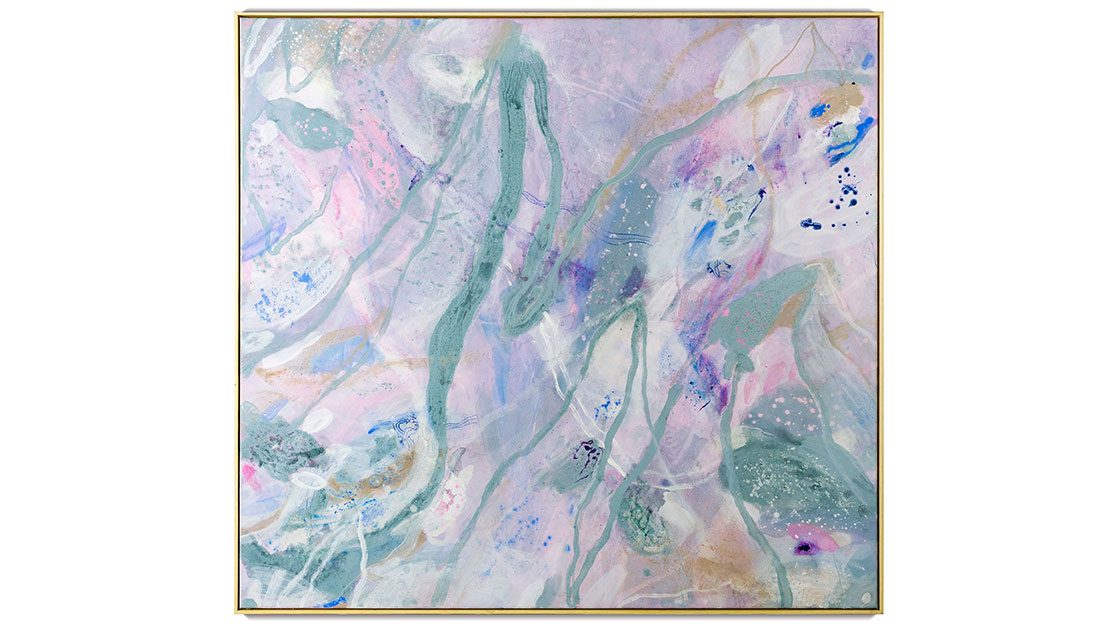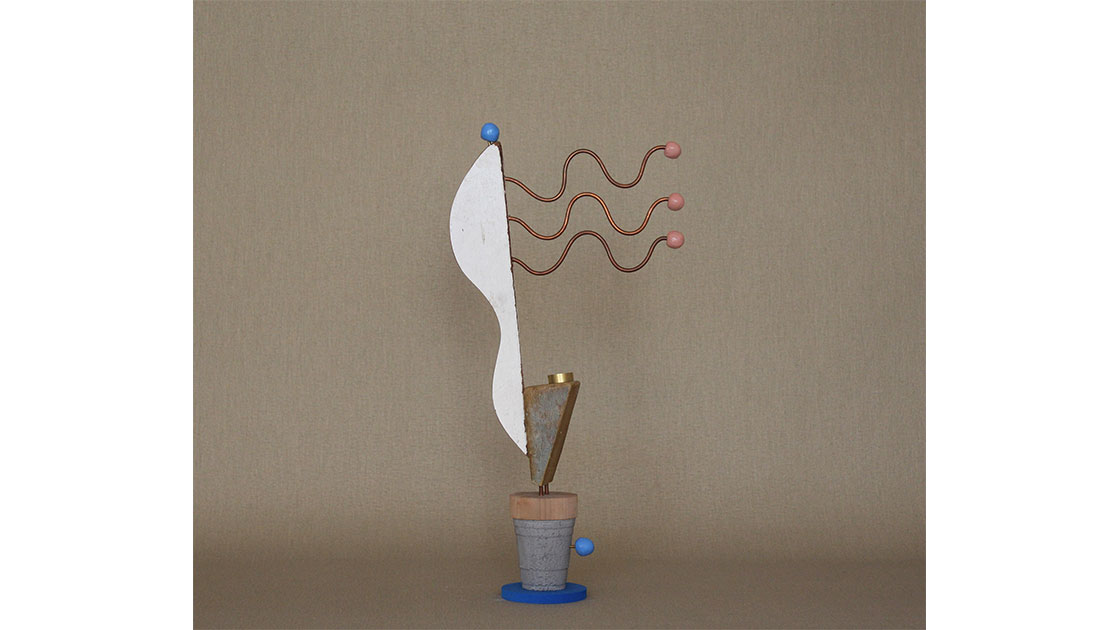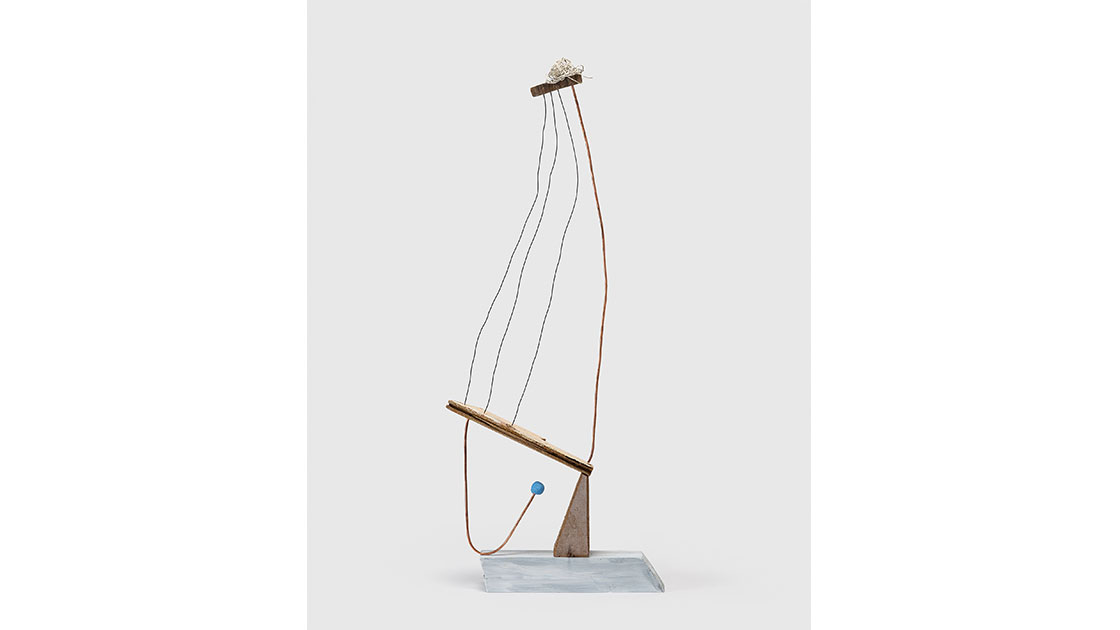Matthew Bromhead
Artist Profile chats to Sydney artist Matthew Bromhead about his various methods of making, the subjectivity of materiality, the importance of artist residencies and the fluidity of inspiration.
This year you were the recipient of the Art Incubator program, culminating in the exhibition ‘Longline’ at Galerie Pompom. What inspired this latest series?
I remember someone once saying that each person is only ever born with a single idea, and that they spend their lives trying to realise it, or even just to work out what it is. In putting together ‘Longline’, I wanted to look back at a busy few years of making and re-visit my actual idea.
I had a lot of sculptural work from an exhibition in Sydney in 2016, plus some drawings that had been made in France during 2017. It wasn’t that I wanted to put all of this work together and place it in the ‘Longline’ show; it was more about spending time connecting the dots between the various methods of making and identifying the common archetypes or aesthetic themes. Once I felt I had found those threads – or ‘lines’ – I went about making the show. Drawing, kinetic sculptural work and painting all drew on earlier bodies that I felt hadn’t yet been brought together in a cohesive exhibition. ‘Longline’ felt like a great opportunity to do that.
The title itself references the fishing term of a longline, which is a taut rope connecting two points, from which smaller lines are dangled into the water below. It struck me as a fitting analogy; I wanted to run a similar line from my past practice and fix it to the present point. Using this as a kind of narrative arc, I hung the different disciplines from it, and in doing so, kept each of the different strands hanging separately, though also together.
The sculptures in this show were embedded with magnets – what were you hoping to convey through this added dimension of movement?
I’ve always thought of magnets as instruments that tell us the world is still alive. If I wake up and the magnets are still on my fridge, it means that the holy forces are still doing their thing. In incorporating them into my recent sculptures, I hoped to infuse the actual works with a sense of the instrumental; that when somebody takes one home and lives with it, it is softly spinning or wobbling in the background, as a subtle reminder that the invisible forces are still alive and well. If they ever stop moving… run.
I’m conscious, however, of the potential novelty of kinetic work, that they are almost like a kind of toy or something. With this in mind, I’ve recently started using magnets purely as a joining material; as a means to connect metal and wood and plaster. In this sense, they’re less overt and become more of a formal consideration.
You mentioned the word ‘instrumental’, and indeed these elongated linear structures adorned with Miro-esque shapes do resemble instruments, as if they can be played. What were some of your reference points or inspirations for the works?
All of the great late modernists had a real sense of space; their objects acted as penetrators or mappers of the space around them. Inside space, of course, we move. For most people, our daily movements are fairly erratic. We jog here, meet people there, drive through somewhere; we’re always moving around. I want the muscle memory of such movements to pass through me and into the objects that I make. I want them to become maps of our movement through space and context.
It’s really nice that you see them as instruments. Instruments require movement in order for them to be played – striking, strumming, bumping – so I think the inherent suggestion of movement is present in the both idea of the instrumental and in the composition of my objects. More literally, I have always harboured the thought of making some kind of usable instrument; a kind of jibbering totem that lets out a whine peculiar to the exact posture of the sculpture that cradles it. Thank you for the reminder.
And what about your paintings – they feel a little more intuitive, or less ‘constructed’, than your sculptures.
Painting, for me, is a work in progress. My first exhibition at Ray Hughes Gallery in 2009 was built entirely of drawing; that’s where I have usually felt most comfortable, and where my output pretty much began. So, I thoroughly enjoy painting, though I’m also very aware that I am learning as I go.
The reason painting appeals to me is its propensity to bend; for things to bleed into one another, for angles to change, for things to appear and disappear. It is sympathetic to rearranging, and I suppose for this reason I would call it a loose material. It has a propensity to disregard the boundaries you have set for it. To make the paintings for ‘Longline’, I dipped marine ply panels in pools of water and then laid the paint down on top of the wet surface where a kind of battle between chance and intent took place; the lines slid around and morphed with the pools of water. Throw some salt in to absorb it and bang – the image is frozen at almost the time you want it to be.
The whole process of making these paintings was mostly an intuitive one – working with materials as they themselves are moving requires you to think as you go, and to make decisions regarding colour and composition at whim, or without making it too- cerebral a process.
Are there any representational elements to these works?
Representation is not something I’m interested in generally. For me, suggestion and aesthetic are more prescient; I want to put a visual emblem to deeper personal impulses or archetypes, and I believe that these originate somewhere other than the world in which we buy coffee or walk our dogs in. That is just my personal disposition; it’s what I am drawn to. Sometimes elements wander into my paintings, but I do my best to take them apart and cannibalise them until they reappear as unfamiliar.
It has always fascinated me when I see non-representational work with very strong authorship; where does the aesthetic come from? If it is truly unique, I’ve always imagined that it has something to do with a kind of mystical ancestry; where forms or arrangements have taken thousands of years – and hundreds of bodies – to arrive in a present consciousness and be waiting at your worktable.
Of course, there are incredible artists working in all kinds of ways, and each of them will hold a strong and eloquent view as to why they believe the exact opposite.
You’ve participated in quite a few residencies, including at the Camac Art Centre in Marnay-sur-Seine, France, and the Hill End Artists in Residence Program. How important is travel, engaging with different surroundings and histories, in your practice?
In terms of residencies, I think they are a Godsend for artists. It’s almost like a working holiday; a boondoggle for the haggard. But they are also conducive of a period of deep concentration, and they really do help you to temporarily live in a bubble where trial-and error are the ruling parties. You throw things around, try things that don’t work and isolate the things that do. They are like how I imagine a musician records a rough album; it sucks, but there are glimmers of greatness that ultimately get teased out and polished for the final pressing. In my case, I suppose that comes in the form of an exhibition.
Thinking about it now, travel has always preceded any exhibition or output of work I’ve made. I don’t think it’s necessarily about where exactly you visit; I think it’s about being forced to think on your feet and to be exposed to unfamiliar situations. In that way, travel re-invigorates your thinking, switches your wires around, and so when you begin thinking about the next body of work, it almost can’t help but be new.
Materiality obviously plays a big part in your practice. In your sculptures, you employ a range of different materials – brass, clay, cork, floss, twine, marble, timber – while your paintings incorporate salt as you mentioned. What informs your choice of material?
Touch is a fantastic thing. In that first second of tactility, a wealth of information is transferred from object to body. It’s like downloading its biography onto a USB stick and slipping it into your pocket for later use. It is this tactility that dictates what will, or won’t, make the final cut for me; if I hold something that has a posture, density or texture that agrees with me, then I’ll bring it home.
My daily wanderings determine what I bump into. I often forage for old nautical materials, or I’ll find a lump of cork or brass on a bench or a plane. It is just time and practice to know what material will or will not work for you. MDF – yuck. Cork – delicious. It’s a matter of personal peculiarities. I hate seeing people working with materials where it seems that the two of them have not sat down and chatted together for very long.
The titles of your works have an absurd quality – such as Donald’s Day Off and Dressed for Breakfast – that prompt the viewer to look a little differently at their content. How do you come up with these titles?
I see a title as a final stamp; how the object greets its viewer after-hours. I am guilty of perhaps over-indulging in this liberty; I want to my titles to take my work, and its viewer, further away from what they actually are, or to seem perhaps more evasive than they actually may be.
Often it is a phrase that appears in mind during the process of its production, and when this happens, the finished object is begging for it. Like knowing a baby’s name for 8.99 months. Sometimes, the titles are actually very much related to the work whilst sounding the opposite. With Dressed for Breakfast, for example, I was so excited to make it the night before, that I woke up really early, finished it off, and was already dressed for breakfast by 9am!
What’s on the horizon?!
I love the quiet moments before you know a new aesthetic of an output will arrive. It’s pregnant, in a way.
After a busy and fortunate year in 2018, I would love to spend some more time overseas in 2019. I’m also developing some large versions of some of my sculptures in conjunction with an industrial design firm in Sydney for some public tenders in 2019. I’ve always wanted to develop less didactic public artworks than the ones that we seem to have around the place; I think the public are smarter than they are generally treated.
EXHIBITION
Fisher’s Ghost Art Award 2018
27 October – 13 December 2018
Campbelltown Arts Centre, Campbelltown



























